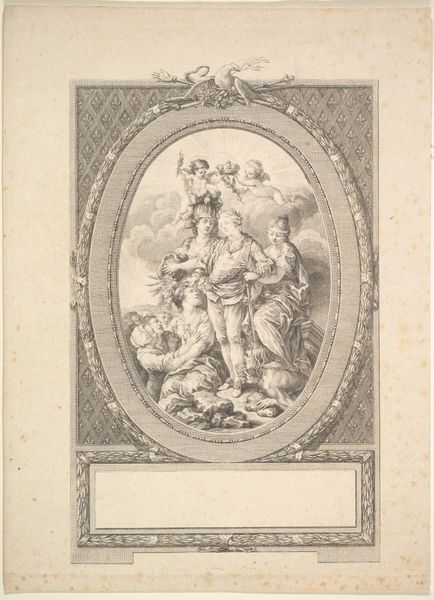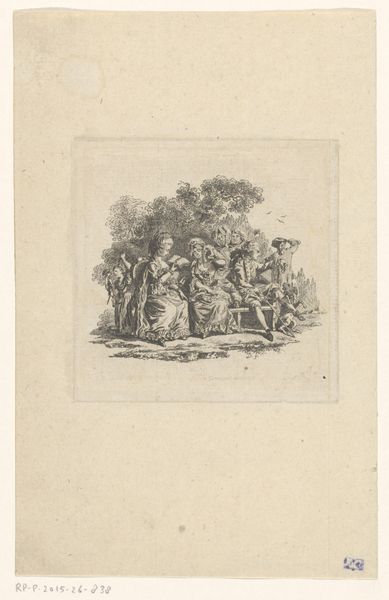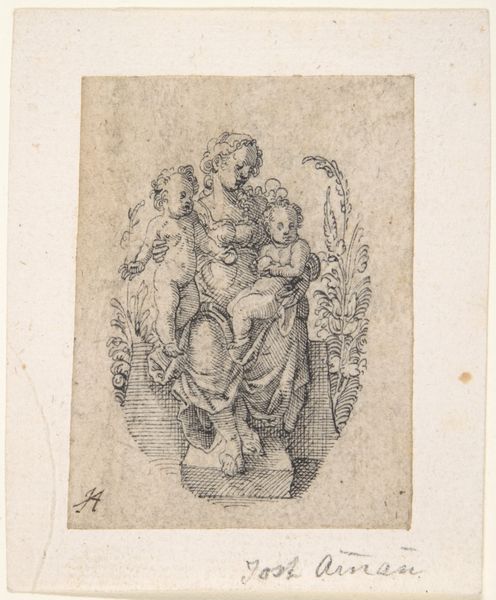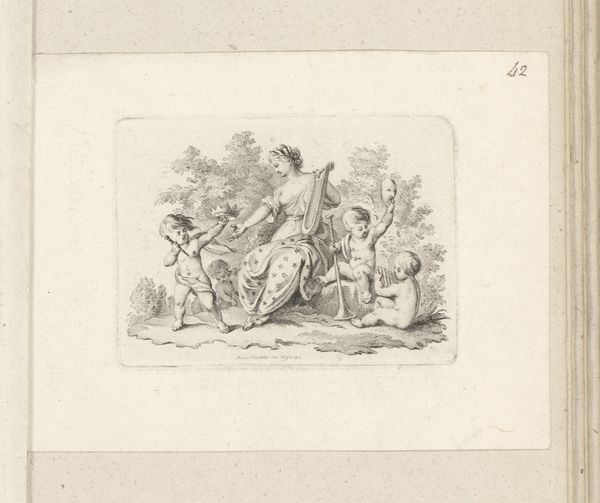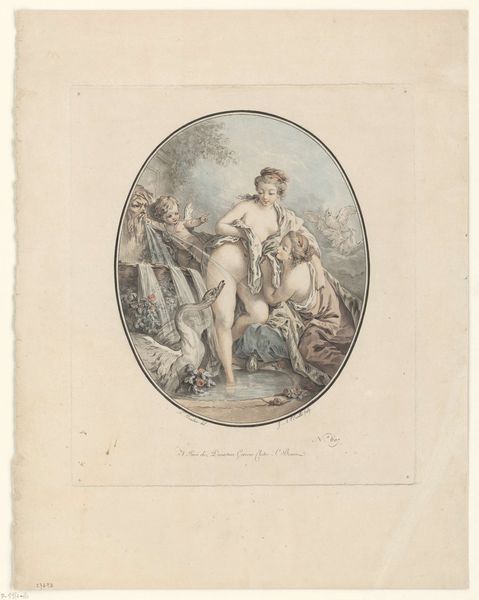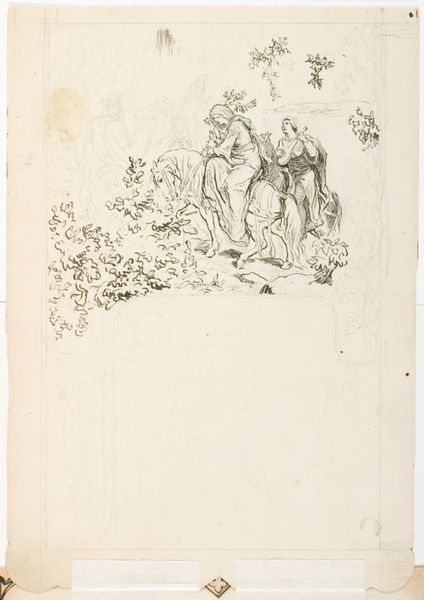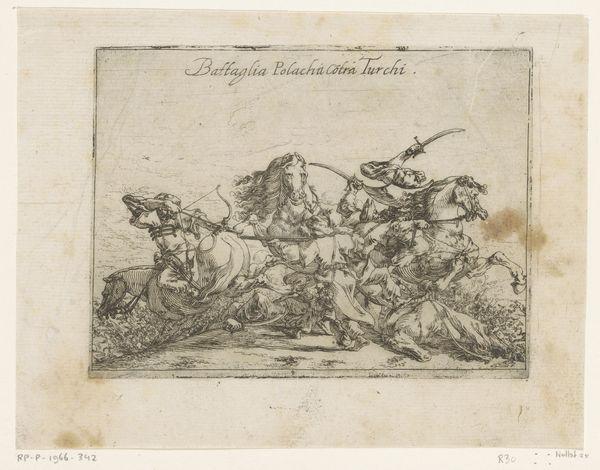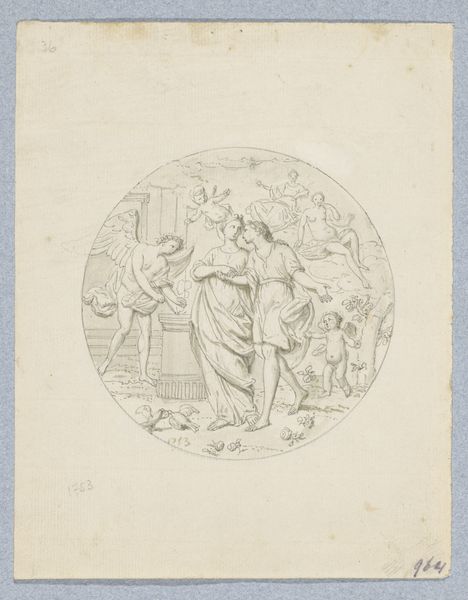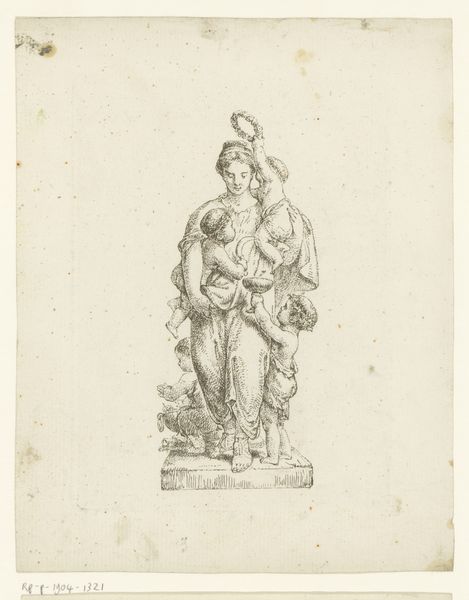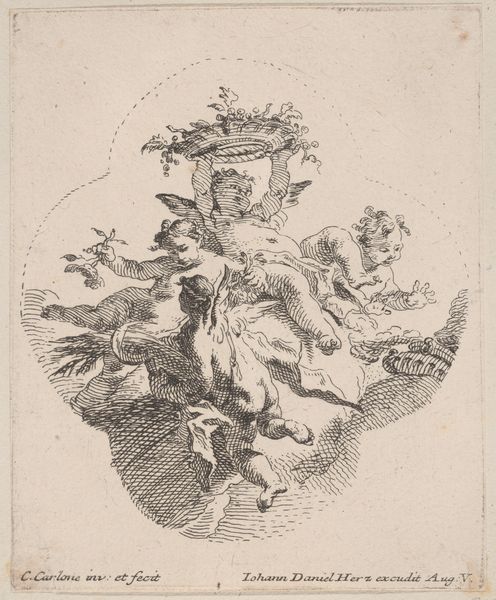
Allegory of Louis XVI on the Occasion of his Accession to the Throne of France in 1774 1775
0:00
0:00
Dimensions: Sheet: 11 3/16 × 8 1/4 in. (28.4 × 21 cm)
Copyright: Public Domain
Augustin de Saint-Aubin made this print in 1774, using etching and engraving. These are intaglio processes, meaning that lines are incised into a metal plate, which is then inked and pressed onto paper. Look closely, and you can see how Saint-Aubin combined the graphic qualities of both techniques. He built up tone and volume using closely-laid lines and cross-hatching. The precision of the engraving is especially evident in details such as the royal figure’s face, while etching gives a softer effect to the surrounding figures. The print would have been produced in multiples, allowing this idealized image of Louis XVI to circulate widely and influence public perception. Note that the amount of time involved in creating the plate itself contrasts starkly with the ease with which the image could then be reproduced. Ultimately, understanding the technical means of printmaking helps us grasp the cultural power that this kind of image once held, and to question traditional distinctions between art, craft, and propaganda.
Comments
No comments
Be the first to comment and join the conversation on the ultimate creative platform.
